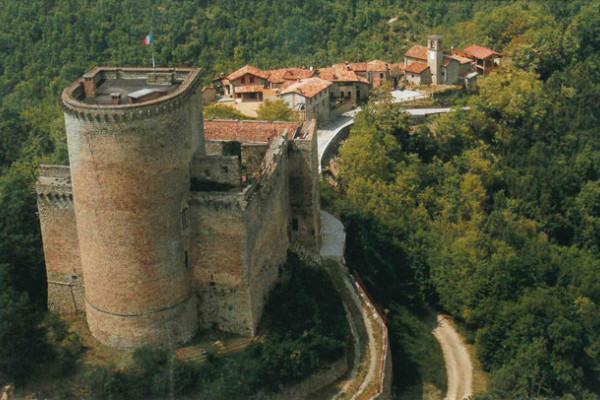- Itinerari
From Varzi to Sant'Alberto di Butrio
A short itinerary with a 500-meter elevation gain that leads to the Hermitage of Sant'Alberto di Butrio. In the first part of the ascent, you pass through Oramala and its castle. After reaching Poggio del Re, the route continues with gentle ups and downs.
This hike through the hills of Oltrepò Pavese, starting from the village of Varzi, takes us to a very special place: the Hermitage of Sant'Alberto di Butrio.
The village of Sant'Alberto di Butrio is named after the priest Alberto, who, having given away all his wealth to the poor, retired as a hermit in the mountains. Alberto built a small church there, placing it under the protection of the Virgin. Other men inspired by faith gathered around him, and thus the Abbey was born, governed by the rules of Saint Benedict. Gregory VII mentioned it in a letter to the monks in 1074, the year in which the founder and first abbot, Sant'Alberto, likely died.
The Abbey, especially due to large donations from the Malaspina family and other lords, quickly became very wealthy. In 1158, the Abbot, now rich and powerful, purchased the County of Pizzocorno from Obizzo Malaspina. The Abbey became a destination for illustrious figures, and tradition says that Frederick Barbarossa stayed there and that the English King Edward II is buried there. In the 16th century, Pope Leo X merged it with the Abbey of Saint Bartholomew in Pavia. This led to a decline in the Abbey’s importance, and it was suppressed by Napoleon Bonaparte in 1810.
The Hermitage of Sant'Alberto di Butrio, dedicated to the hermit abbot who founded the Abbey, is considered a jewel of medieval architecture. Nearby, the village of San Ponzo is of great interest. Completely built in local stone, it still retains the authenticity of its medieval layout. Not far away are the caves of San Ponzo, where the saint hermit from the Roman period lived. Near the caves, there is a spring of miraculous water and a resting area for visitors.
Before reaching the hermitage, you will encounter the Castle of Oramala, which became the favored residence of the Malaspina court and hosted many well-known troubadours of Occitan Provençal culture. The castle, now a private residence, is currently closed to the public.
Mostra cosa c'è nelle vicinanze:

